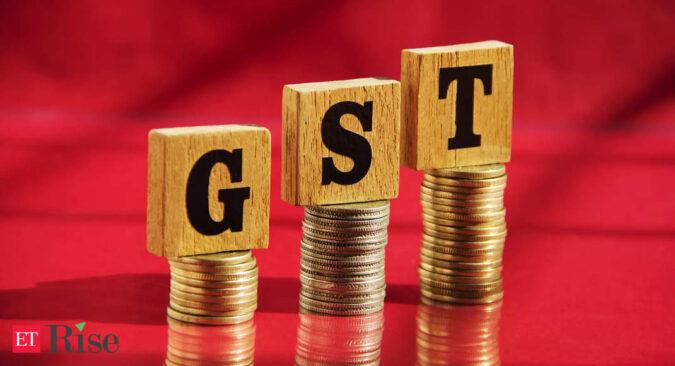GST rate rationalisation roadmap, with consistently record high collections
Prior to the inception of GST, extensive deliberations were done by the government around the most critical aspect, viz. GST rates. The desire has always been to have a single rate taxation regime with an intent to simplify the tax regime bereft of legacy issues around classification and on tax rates. However, on account of several socio-economic reasons such as demographic differences, income level disparity amongst the population, it was eventually decided to have a multiple rate structure.
However, a multiple rate structure conceived issues such as inverted duty structure, litigations around classification and rate related issues, supplies of public interest being taxed at a higher rate of GST, cascading effect of taxes, etc. The rates of GST in the hospitality sector on food and beverages are linked to the hotel room tariff. Further, the high rate of GST on LPG has caused increased operational costs. Consumers at the receiving end of healthcare services are bearing the burden of GST charged on non-ICU hospital rooms with tariffs above INR 5,000. The players in the energy sector are barely earning rational margins as GST on inputs and capital goods becomes a cost to such companies. Similar dilemma is being faced by the petroleum industry. These are some of the industries, but we can observe that there is a definitive need for rationalisation of GST rates across industry spectrum.
The primary ideology behind rate rationalisation has been to simplify the GST rate structure and not to garner additional revenues for the government. Over the years in the implementation of GST, the government has been quite proactive through consultative approach with the trade and industry and has been rationalising GST rates or resolving classification disputes mainly arising due to conflicting advance rulings and interpretations by the field formations.
The rate rationalisation has been made considering the nuances and historical tax collections in the particular sector. While the GST Council has endeavoured to continuously review the tax structure and make amendments to GST rates / exemptions over the years, a formidable initiative was taken by the GST Council at its 45th meeting held on September 24, 2021. A Group of Ministers (GoM) was formed to undertake the exercise of rate rationalisation. The objective of this group was to suggest rational GST rates for supply of various goods and services, considering the revenue neutrality and sensitivity of such supplies, to resolve classification-related disputes, to correct inverted duty structures and to avoid cascading effect of indirect taxes.
Since the inception of GST and formation of GoM, the GST rates / exemptions on more than 500 goods and more than 100 services have been amended leading to elimination of inverted duty structures, resolution of classification issues, lower rates or exemptions from GST on goods and services of public interest and elimination or limitation of exemptions on supplies to increase the tax base. Despite numerous rationalisations undertaken over the 6 years of GST, the GST treasury has only seen an upward trend except for the year 2020, when the entire globe was hit by the COVID-19 pandemic.Ever since the recovery of businesses from COVID-19, the GST treasury has seen growth and has far surpassed pre-COVID collections. A large part of it has been on account of the economic boom in the GDP of India post the COVID phase and the rise of “Make in India” theme over the years. Further, the average monthly gross revenue collection has risen from Rs 90,000 crore per month in the first year, to an average of Rs 1,58,000 crore per month, in its sixth year of implementation. In May 2023, the gross GST revenue collected amounted to Rs 1,57,090 crore, with CGST at Rs 28,411 crore, SGST at Rs 35,828 crore, IGST at Rs 81,363 crore (including Rs 41,772 crore collected on imported goods), and cess at Rs 11,489 crore (including Rs 1,057 crore collected on imported goods). The revenues for May 2023 were 12% higher YoY, with revenue from imports of goods increasing by 12% and revenues from domestic transactions (including import of services) growing by 11%. The higher collections prove that the reductions in rates have nurtured revenue collections and the government is at an ideal point in the Laffer Curve.Way forward:
Given that efforts are being taken to tackle the challenges surrounding GST rates, the exercise of rate rationalisation still requires efforts. Even though the government has been proactive in rationalising GST rates over its 6-year span, the GST impact on certain sectors is not yet revenue neutral. Some of these sectors are hospitality sector, healthcare sector, petroleum sector, energy sector, as highlighted above.
Furthermore, surveys show that players across all industries are strongly in favour of rate rationalisation especially towards the elimination of cascading effect and reduction of the tax burden.
The 12% year-on-year growth in GST revenue collections align with the government’s budget estimates for this fiscal year and indicates a positive trend. However, it would be further factored by two major activities planned by the government viz. GST audits planned by the Department before September 2023, which would lead to an upward movement of these figures in the coming months and the success of fake invoicing drive which might correct the gross revenue numbers.
Having said that, the record-high GST collection in FY 2023 does reflect a favourable growth in domestic demand and projects the Indian economy as a business incubator across the globe, especially when global growth remains a challenge today.
Hardik Gandhi, is Partner, Deloitte India. Komal Sampat and Harsh Doshi are with Deloitte Haskins & Sells LLP.
